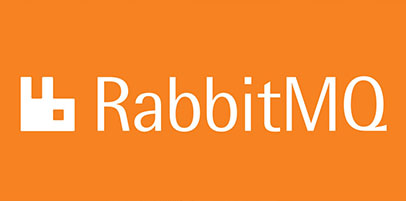
In this tutorial, we will show you how to install RabbitMQ on Debian 11. For those of you who didn’t know, RabbitMQ is a free, open-source, and one of the most popular message broker software. It supports multiple messaging protocols and uses plugins to communicate with popular messaging solutions like MQTT. RabbitMQ supports multiple messaging protocols. RabbitMQ can be easily deployed in distributed and federated configurations to meet high-scale, high-availability requirements.
This article assumes you have at least basic knowledge of Linux, know how to use the shell, and most importantly, you host your site on your own VPS. The installation is quite simple and assumes you are running in the root account, if not you may need to add ‘sudo‘ to the commands to get root privileges. I will show you through the step-by-step installation of the RabbitMQ on a Debian 11 (Bullseye).
Prerequisites
- A server running one of the following operating systems: Debian 11 (Bullseye).
- It’s recommended that you use a fresh OS install to prevent any potential issues.
- A
non-root sudo useror access to theroot user. We recommend acting as anon-root sudo user, however, as you can harm your system if you’re not careful when acting as the root.
Install RabbitMQ on Debian 11 Bullseye
Step 1. Before we install any software, it’s important to make sure your system is up to date by running the following apt commands in the terminal:
sudo apt update sudo apt upgrade sudo apt install gnupg2 curl wget apt-transport-https software-properties-common
Step 2. Installing Erlang.
RabbitMQ requires Erlang, you can simply download the Erlang repository package from its official website and install it on your Debian system:
wget https://packages.erlang-solutions.com/erlang/debian/pool/esl-erlang_23.1.5-1~debian~stretch_amd64.deb dpkg -i esl-erlang_23.1.5-1~debian~stretch_amd64.deb
Then, update the Apt cache and install Erlang packages:
sudo apt install -f sudo apt update sudo apt install erlang erlang-nox
Step 3. Installing RabbitMQ on Debian 11.
By default, the RabbitMQ is not available in the Debian 11 base repository. So you will need to add the RabbitMQ repository to your Debian system:
add-apt-repository 'deb http://www.rabbitmq.com/debian/ testing main' wget -O- https://www.rabbitmq.com/rabbitmq-release-signing-key.asc | apt-key add -
Next, update your system package list and install Erlang using the following command below:
sudo apt install rabbitmq-server
RabbitMQ has been installed on the Debian system. Use the following commands to enable the RabbitMQ service on your system. Also, start the RabbitMQ service:
sudo systemctl start rabbitmq-server sudo systemctl enable rabbitmq-server sudo systemctl status rabbitmq-server
Step 4. Create Admin User on RabbitMQ.
Now we create your own administrator account on the RabbitMQ server using the following commands:
rabbitmqctl add_user admin password rabbitmqctl set_user_tags admin administrator
Next, set proper permission with the following command:
rabbitmqctl set_permissions -p / admin ".*" ".*" ".*"
After that, enable the RabbitMQ management console using the following command:
rabbitmq-plugins enable rabbitmq_management
Step 5. Accessing RabbitMQ Web Interface.
Once successfully installed, open your web browser and access the RabbitMQ web console using the URL http://your-server-ip-address:15672/. You should see the RabbitMQ login page:

Congratulations! You have successfully installed RabbitMQ. Thanks for using this tutorial for installing the latest version of the RabbitMQ on Debian 11 Bullseye. For additional help or useful information, we recommend you check the official RabbitMQ website.